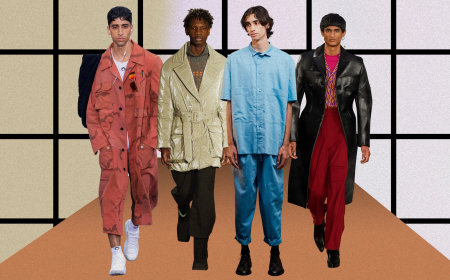The Green Wardrobe Guide: How to Dress Sustainably
Discover how to embrace sustainable fashion without compromising on style. Learn tips on ethical shopping, eco-friendly fabrics, and building a wardrobe that’s both chic and planet-friendly.

In a world increasingly aware of environmental issues, the fashion industry is undergoing a transformation. Sustainable fashion is no longer a niche concept—it’s a necessity. As consumers become more conscious of the environmental and social impact of their clothing choices, the demand for ethical fashion is on the rise. But what exactly is sustainable fashion, and how can you incorporate it into your wardrobe without sacrificing style?
In this article, we’ll explore the concept of sustainable fashion, its importance, and practical tips on how to style ethically while staying on-trend.
What is Sustainable Fashion?
Sustainable fashion refers to clothing, shoes, and accessories that are produced and consumed in ways that are environmentally friendly, socially responsible, and economically viable. It’s about creating fashion that respects the planet and the people involved in the production process. This includes using eco-friendly materials, reducing waste, and ensuring fair wages and safe working conditions for garment workers.
The fashion industry is one of the largest polluters in the world, contributing to water pollution, deforestation, and greenhouse gas emissions. Sustainable fashion aims to address these issues by promoting practices that minimize harm to the environment and support ethical labor practices.
Why Sustainable Fashion Matters
-
Environmental Impact
The traditional fashion industry is resource-intensive, consuming vast amounts of water, energy, and raw materials. Sustainable fashion seeks to reduce this impact by using renewable resources, recycling materials, and minimizing waste. -
Social Responsibility
Fast fashion often relies on cheap labor in developing countries, where workers are paid low wages and subjected to poor working conditions. Ethical fashion ensures that workers are treated fairly and paid a living wage. -
Longevity and Quality
Sustainable fashion focuses on creating high-quality pieces that last longer, reducing the need for frequent replacements. This not only saves money in the long run but also reduces waste. -
Consumer Awareness
As consumers become more aware of the impact of their choices, they are demanding transparency from brands. Sustainable fashion encourages brands to be accountable for their practices and offer ethical alternatives.
How to Style Ethically: Tips for a Sustainable Wardrobe
1. Choose Eco-Friendly Fabrics
One of the easiest ways to start dressing sustainably is to opt for clothing made from eco-friendly materials. Look for fabrics like organic cotton, hemp, linen, bamboo, and Tencel, which have a lower environmental impact compared to synthetic fibers like polyester.
Additionally, consider recycled fabrics, which repurpose existing materials to create new clothing without depleting natural resources.
2. Invest in Timeless Pieces
Sustainable fashion is not about following fleeting trends; it’s about building a timeless wardrobe. Invest in classic pieces like a well-tailored blazer, a little black dress, or a pair of quality jeans that can be styled in multiple ways and last for years.
By focusing on versatile, long-lasting items, you reduce the need for constant shopping and minimize waste.
3. Thrift and Second-Hand Shopping
Thrifting is one of the most sustainable ways to update your wardrobe. Second-hand clothing not only reduces waste but also gives pre-loved items a new lease on life.
Explore thrift stores, consignment shops, and online platforms like Poshmark or Depop to find unique, affordable, and eco-friendly fashion pieces.
4. Support Ethical Brands
Many brands are now committed to sustainable and ethical practices. Research and support companies that prioritize fair labor practices, eco-friendly materials, and transparent supply chains.
Some well-known sustainable fashion brands include Patagonia, Eileen Fisher, Stella McCartney, and Reformation.
5. Rent or Borrow for Special Occasions
Instead of buying a new outfit for every event, consider renting or borrowing clothes for special occasions. Rental services like Rent the Runway and HURR allow you to wear designer pieces without the commitment or environmental impact of purchasing.
This is a great way to stay stylish while reducing your carbon footprint.
6. Upcycle and Repurpose Old Clothes
Before tossing out old or worn-out clothing, think about upcycling or repurposing them. Turn an old T-shirt into a tote bag, transform jeans into shorts, or use fabric scraps for DIY projects.
Upcycling not only extends the life of your clothes but also adds a personal, creative touch to your wardrobe.
7. Take Care of Your Clothes
Proper care can significantly extend the life of your garments. Follow care labels, wash clothes in cold water, and air-dry whenever possible to reduce energy consumption.
Repairing small tears or replacing buttons can also help you get more wear out of your favorite pieces.
8. Opt for Minimalism
The minimalist fashion movement encourages owning fewer, high-quality items that you truly love and wear frequently. By adopting a minimalist approach, you reduce clutter, save money, and make more intentional, sustainable choices.
Sustainable Fashion Trends to Embrace in 2023
-
Neutral Tones and Earthy Palettes
Neutral colors like beige, olive green, and muted browns are not only timeless but also easy to mix and match, making them a staple in any sustainable wardrobe. -
Vintage and Retro Styles
Vintage fashion is making a comeback, with ’70s flares, ’90s slip dresses, and retro prints dominating the runways. Shopping vintage is a great way to stay on-trend while being eco-friendly. -
Oversized Silhouettes
Comfort meets style with oversized blazers, wide-leg pants, and loose-fitting dresses. These pieces are versatile and can be worn year-round, reducing the need for seasonal shopping.
The Future of Sustainable Fashion
The future of fashion lies in innovation and collaboration. Brands are increasingly exploring new technologies, such as bio-fabrication and 3D printing, to create sustainable materials. Consumers, too, are playing a crucial role by demanding transparency and supporting ethical brands.
As sustainable fashion continues to grow, it’s important for both individuals and the industry to work together to create a more responsible, eco-friendly fashion ecosystem.
Conclusion: Style with a Conscience
Sustainable fashion is not just a trend—it’s a lifestyle. By making conscious choices about what we wear, we can reduce our environmental impact, support ethical practices, and still look stylish.
Whether it’s choosing eco-friendly fabrics, thrifting, or supporting ethical brands, every small step counts. So, the next time you’re updating your wardrobe, remember: style with a conscience is the way forward.






























































